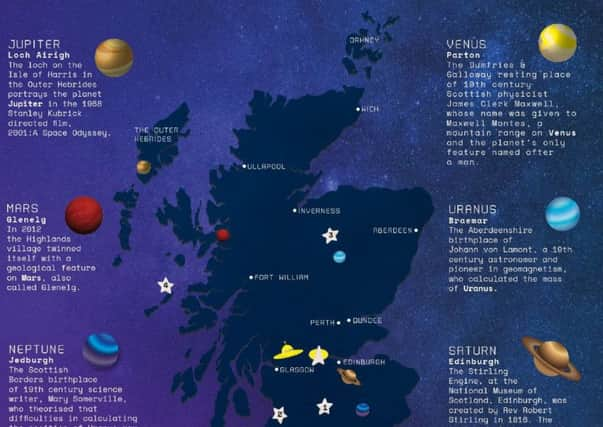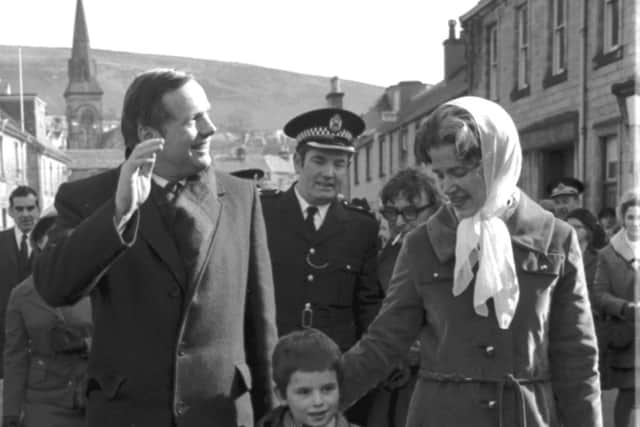Scotland’s space exploration links mapped for moon landing anniversary


Langholm, which lies just seven miles from the English Border, is one of several settlements in Scotland to be included in a new map that celebrates the country’s historic links to space exploration.
It was here that astronaut Neil Armstong visited in 1972 to accept the freedom of the burgh – the first and so far only person to be bestowed the title – in recognition of Langholm’s ancient role as the seat of Clan Armstrong.
Advertisement
Hide AdAdvertisement
Hide AdThe map, which has been produced by VisitScotland to mark today’s 50th anniversary of the Apollo 11 mission launch that took Armstrong to the moon, explains how some unlikely corners of the country have played a role in our collective understanding of the solar system. Also featured is Braemar, Aberdeenshire, close to where the Scottish-German astronomer and physicist Johann von Lamont was born in 1805.


Originally known as John Lamont, the forrester’s son was sent to be educated at the Scots monastery in Regensburg, Bavaria, at the age of 12.
Lamont went on to become professor of astronomy at the University of Munich where he did much to advance the understanding of the magnetism of the Earth, undertaking magnetic surveys across large parts of western Europe, as well as calculating the mass of Uranus.
VisitScotland, which also celebrates its 50th anniversary this year, believes the country offers a lot to stargazers and fans of space exploration.
Scotland is already home to two International Dark Sky Parks – Galloway Forest Park near Dumfries, and Tomintoul and Glenlivet in the Cairngorms National Park – which boast unrivalled night-time views of stars.
Malcolm Roughead, chief executive of VisitScotland, said: “For 50 years, VisitScotland has helped position Scotland as a must-visit destination to audiences across the world. It is therefore fitting that in our anniversary year we set our sights even further and travel into space in what can only be described as a truly out-of-this-world campaign.
“This offered the opportunity to delve into the past and celebrate the country’s contribution to space exploration and astronomy and its ancestral links to one of the greatest moments in history.
“The new trail reveals some of the country’s stellar attractions and locations to visit to firmly cement Scotland’s place in astro-tourism.
“After all, our best views aren’t confined to our awe-inspiring landscapes, but reach up high into the night sky above as well.”